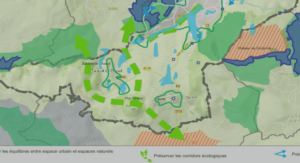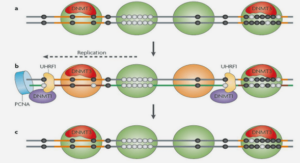THE FOREST INDUSTRY AND ITS VALUE CHAIN
It all starts with the forest; a rich, complex, but also fragile ecosystem. Home of thousands of wildlife species, the forest has evolved throughout the ages offering shelter, protection, and prosperity to its inhabitants. Human populations have thrived on the forest bountiful wealth, and from one of its prominent resources (i.e. the wood), have developed an array of tools and construction materials to explore and shape the world. Over the centuries, a rise of the environmental awareness occurred and sustainable measures were undertaken. Nowadays, forest management and operations are carefully planned to perpetuate a stable harvest cycle, making the sector sustainable and strongly positioned to be part of the green economy. Nonetheless, some challenges remain to be solved as for how the industry can play a role in a low pollution based economy and what could be the successful pathways. Undeniably, developments and applications centered on the innovative use of wood have to be conducted implying high capital investments and risk-oriented management. This chapter is an introduction to how the Canadian forest industry is structured to define the context in which the case study conducted in this thesis evolves in.
The Canadian forest industry
Known around the world for its abundant quality products, the Canadian forest industry accounted in 2015 for seven (7) percent of the Canadian total exports, representing nine (9) percent of Canada’s manufacturing gross domestic product (Natural Resource Canada [2]). It goes without saying that the forest industry is an important emblem of Canada’s economy. Yet, the sector is affected by deep cyclical trends and market shifts that increasingly disturb its traditional foundation. While the last years were more clement, the notoriously difficult 2003-2009 period shook the industry and closed more than 450 mills across Canada. Up to this day, the sector has not fully recovered. On the other hand, the forest industry keeps strong economic potential and uses this adversity to bring new ways of generating sustainable value through innovative products and technologies. Henceforward, Canada invests in its capacity to diversify the traditionally based sector by promoting the research and development of new products to secure new markets. Thus, in order to have a better understanding of the challenges, an overview of Canada’s forest governance framework is presented, followed by a presentation of the Canadian forest value chain and its product portfolio. Finally, the sustainable aspects and their impact in today’s economy are explored.
The governance framework
With a superficies of 9.985 million square kilometers, Canada is the second largest country in the world. Surprisingly, 35 percent of the country’s superficies is covered by forest, of which 75 percent is in the boreal zone. To sustainably manage the exploitation of this profuse resource, a Canadian forest governance structure is developed to delineate power and establish the key roles. Interestingly, 94 percent of forest land in Canada is publicly owned and only four (4) percent is owned by the federal government [2]. In fact, provinces and territories have jurisdiction over most of the resource and together manage 90 percent of the total Canadian’s forest by developing and enforcing laws, regulations, and policies.
The Canadian governance framework set rules, procedure, and informational guidelines to guide the industry and enforce the sustainable management of the forest. Laws and international agreements set or signed by the federal government have to be overlapped by provincial and territorial governments’ legislations. Overall, the federal legislation helps international trades by ensuring customers that the Canadian products are legally and sustainably produced. Thus, to properly assess a regional forest value chain network, two aspects have to be further explored: what defines sustainability in forestry and how does the provincial and territorial jurisdiction affect the forest industry. To help understand the extent of these aspects, the definition of the forest value chain and its product portfolio is first conducted.
The forest value chain and product portfolio
The forest value chain is a large and complex system fashioned by an extraordinary versatile feedstock. The wood has the potential to create value from single and multi-stage processes where transformation wastes can be further processed creating a business-to-business (BtoB) circular economy. To model such a particular supply chain, one critical aspect originating from the intrinsic nature of wood transformation has to be considered. This aspect is the divergence incurred by the processes (i.e. divergent processes). What is meant by divergent processes is the capacity to transform one principal feedstock into many products. Supply chains based on this characteristic are for instance in the petroleum, sugar or the forest industries. Alternatively, convergent processes are seen mostly in manufacturing industries that converge many products to produce one final merchandise, for instance in the car, electronic, and machinery industries. This aspect wrought the forest supply chain and creates a network with its own specificities, and where vertically integrated companies are prevalent. In the following paragraphs, the Canadian forest value chain is described where traditional and novels products are overviewed .
Value chain network
When processed, wood is parted into various physical and chemical forms offering a wide range of possible interactions, where sets of processes can be formed and synergies developed. The forest industry has an extensive value chain starting at the harvesting area, followed by layers of production-distribution centers (PDC), and finally up to the customers. To support this complex network, stakeholders across the supply chain play important roles and their actions are directly or indirectly correlated to the value created. Traditionally, the forest industry was divided into three main segments: forestry and logging, pulp and paper product manufacturing, and solid wood product manufacturing. Over the years, developments in these segments have brought more performant products such as composite wood, high strength packaging paper, torrefied wood, etc., but the structure remained the same without any fundamental change. Generating quantities of waste, pulp mills and sawmills started to burn them as a source of heat and energy, to a point where combined heat and power plant became of commercial interest. This approach is of interest in the more recent context due to its capacity to reduce our dependency to fossil fuel and improve the processes efficiency. Nowadays, the bioprocessing of the lignocellulosic biomass is of interest because of its potential to enhance the value extracted from the fibre using biochemical and thermochemical conversion processes .
INTRODUCTION |




